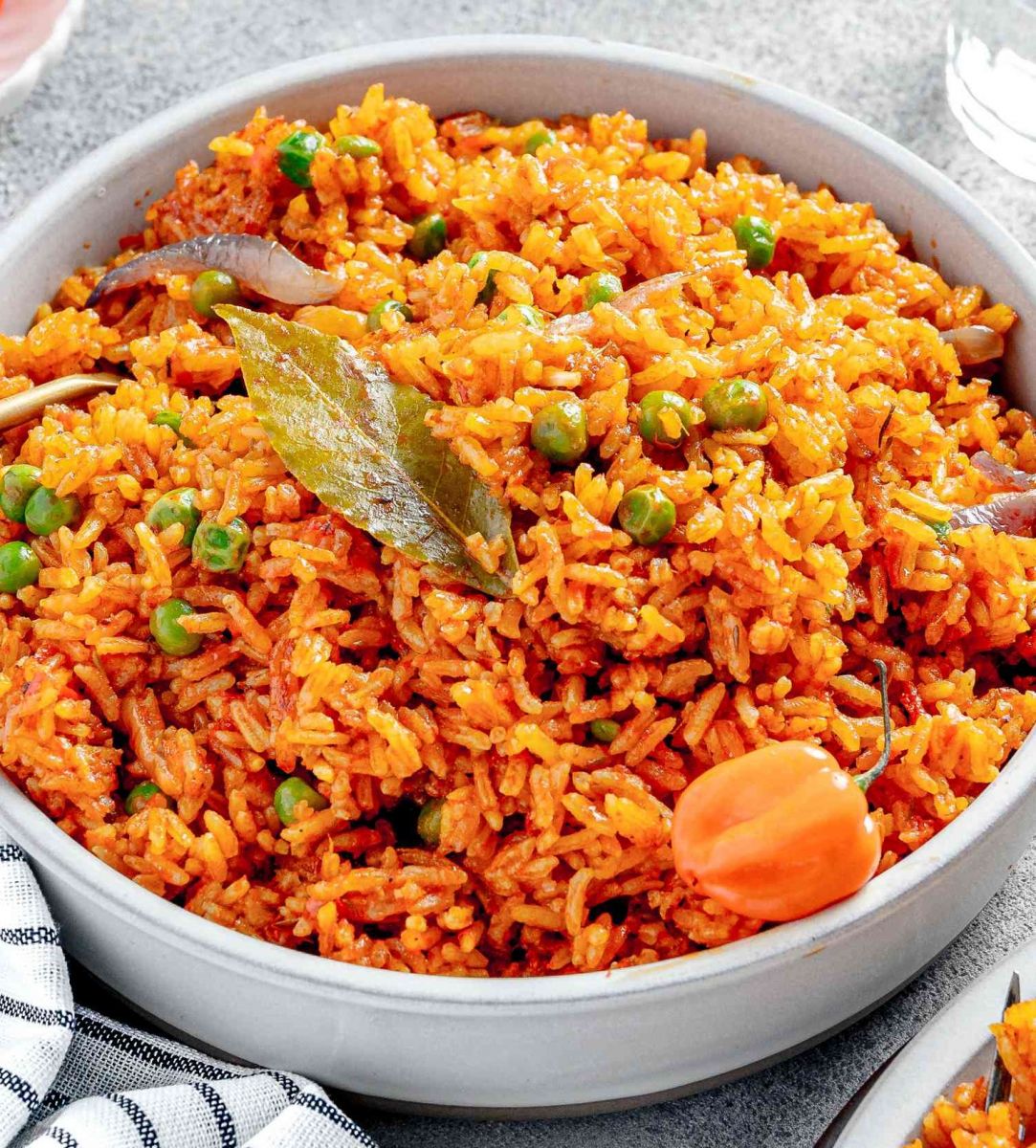Is the Rice You Eat Really Safe? New Study Points to Caution
By Adebowale Bello. B.Tech Microbiology, Freelance Health Writer. Medically reviewed by DLHA team.

Bowl of West African style jollof rice.
Rice is a staple food in many African homes. From jollof rice to fried rice, tuwo to coconut rice, it features heavily in our daily meals and festive gatherings. It’s affordable, filling, easy to cook and enjoyed by millions. New research, however, has shown that no matter how tasty rice may be, it may not be as safe as we think because of contaminants from toxic metals.
While much of the report focused on rice sold in the United States, it raises serious concerns that apply to rice-eating communities across the world, especially in Africa, where local reports have also confirmed rice contamination from both chemical and biological sources.
The study tested 145 samples of rice products sold in United States supermarkets. These included white rice, brown rice, seasoned rice and baby rice cereals, with samples from both local and international sources.
Scientists examined each sample for toxic heavy metals like arsenic, cadmium, lead and mercury, which could harm vital organs like the brain, kidneys and immune system when consumed in high amounts or over long periods. The focus was on inorganic arsenic, the most dangerous form of arsenic, which often enters food from soil, water or chemical fertilisers.
The results were alarming. Every single rice sample contained detectable levels of arsenic. Even more concerning, more than one in four products had arsenic levels higher than what the U.S Food and Drug Administration (FDA) considers safe for baby food. That means many children could be eating more arsenic than is considered acceptable for their age and weight.
Rice grown in certain parts of the U.S, especially the Southeastern states, had the highest levels of contamination. Italian Arborio rice, a type often used in creamy rice dishes, also showed high arsenic content. On the other hand, rice from California, India and Thailand (like jasmine and basmati rice) had significantly lower levels.
Arsenic wasn’t the only problem. Cadmium, lead and mercury, all dangerous chemicals were also present in the samples. In total, arsenic made up about 79% of the heavy metal content found in the rice, followed by cadmium at 17%, with smaller amounts of lead and mercury.
Even more worrying is the fact that arsenic levels in rice have not improved over the last 25 years, despite awareness and calls for tighter food safety standards.
Although this study was done in the U.S, it has strong implications for African countries, especially those that import rice from affected regions or grow rice in areas with poor environmental control.
Many African families rely heavily on rice however, research has shown that babies and young children are more vulnerable to toxins like arsenic because of their developing organs and smaller body size.
Here are examples of what has been discovered across the continent:
Kenya: Mycotoxins were detected in rice grown in Mwea, a major rice-producing region, pointing to poor post-harvest storage and handling practices.
Niger: A study in Niamey found that 48% of rice samples contained aflatoxins, with some samples testing as high as 13.8 nanograms per gram of rice.
Nigeria: Several recent studies have shown the presence of aflatoxins in locally grown and imported rice due to poor pre- and post-harvest agricultural practices
Côte d'Ivoire, Madagascar and Uganda: A regional study revealed multiple mycotoxins including aflatoxins, fumonisins and zearalenone in both imported and local rice. These toxins are linked to liver damage, immune suppression and cancer.
Senegal: In Senegal, the story is no different as the huge amount of toxic chemicals in the soil have accumulated in plants such as rice.
These reports confirm that food safety challenges are not limited to imported rice. Poor storage, exposure to moisture, contaminated soil, use of untreated water and lack of regulatory enforcement all make rice grown and sold in Africa vulnerable to toxic contamination.
What Can You Do to Eat Rice Safely?
You don’t need to stop eating rice altogether, but there are steps you can take to reduce your exposure to arsenic:
This report reminds us of the importance of food regulation and the role of African governments and health agencies, some of which include:
Rice is not going anywhere and neither is our love for it but we must be aware of what we’re putting on our plates. The combination of arsenic, lead, cadmium and mould toxins in rice is a silent danger that must never be ignored.
You may not be able to control how rice is grown or imported but you should always take action at home to reduce your risk of exposure to toxic metals and moulds in the rice you and your family consume.
Source: Healthy Babies, Bright Futures Report
Published: June 26, 2025
© 2025. Datelinehealth Africa Inc. All rights reserved.
Permission is given to copy, use and share content for non-commercial purposes without alteration or modification and subject to attribution as to source.
DATELINEHEALTH AFRICA INC., is a digital publisher for informational and educational purposes and does not offer personal medical care and advice. If you have a medical problem needing routine or emergency attention, call your doctor or local emergency services immediately, or visit the nearest emergency room or the nearest hospital. You should consult your professional healthcare provider before starting any nutrition, diet, exercise, fitness, medical or wellness program mentioned or referenced in the DatelinehealthAfrica website. Click here for more disclaimer notice.